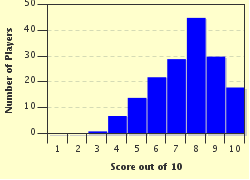Quiz Answer Key and Fun Facts
1. One of the most common diseases that afflict us as we get older is Diabetes Mellitus, which is essentially too much sugar in the bloodstream. What is the easiest way, from the options listed, to screen for diabetes mellitus?
2. As we age, we seem to get tired more easily. It is important to make sure we do not become anaemic. This is easily done by performing a simple blood test. Which blood constituent do we measure?
3. If we become anaemic, it is important we know the cause of the anaemia so we can obtain the correct treatment. This can be performed by looking at the shape of the red blood cells under the microscope. In iron deficiency anaemia, how do the red blood cells look, compared to normal cells?
4. It is common for the elderly (and sometimes the not so elderly) to have a heart attack. The medical term for a heart attack is a myocardial infarction. What actually is a heart attack?
5. Cancer is such as emotive word, yet its prevalence increases with age. Fortunately a diagnosis of cancer is not an automatic death sentence. Sometimes a biopsy is taken and examined under the microscope. On the lab report it says your cancerous growth has a "well-defined border". Is this a good sign?
6. Leukaemia is a form of cancer. It is cancer of the blood. The elderly and the very young are the most susceptible. In aging adults what type of cells become cancerous in leukaemia?
7. Blood pressure rises as we get older. Hypertension is increased blood pressure beyond the normal range which causes strokes and kidney disease amongst other diseases. What is the first symptom a person may have which leads a doctor to think his patient has hypertension?
8. In people of European descent, most people require spectacles for low vision by the time they reach fifty. Sometimes, vision remains blurry even when spectacles are prescribed. This leads to a diagnosis of cataracts. What is the most common treatment for this disease?
9. Infections are very common in the very young and the elderly. You go to a doctor asking for antibiotics for a sore throat. After she examines you, she writes a prescription but tells you to only fill the script if you are still sick in 48 hours. Why?
10. Congratulations, if you manage to spend a life time dodging these health-related issues you might be able to die of old age. What exactly causes death if you die of "old age"?
Source: Author
1nn1
This quiz was reviewed by FunTrivia editor
rossian before going online.
Any errors found in FunTrivia content are routinely corrected through our feedback system.

